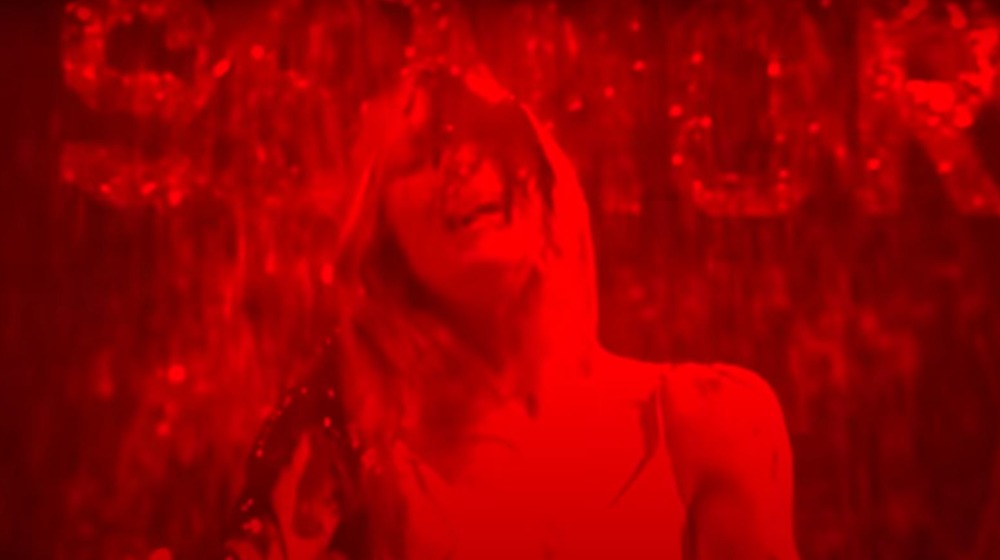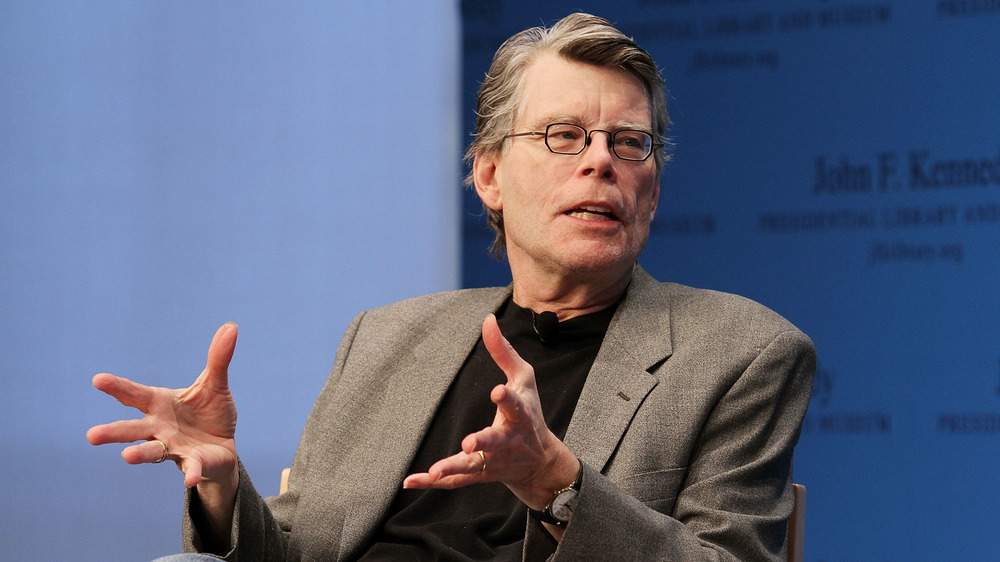How Stephen King's First Bestseller Almost Ended Up In The Trash
If Edgar Allan Poe is American horror's emo progenitor, and H.P. Lovecraft its weird (and likely racist) uncle, then Stephen King is definitely its dependable, sturdy-prosed father. King is inarguably one of modernity's most successful authors. Per Washington Post, his 50+ titles have sold a mind-blowing 350 million copies worldwide, and since 2010 alone, as outlined on Statista, King has earned about $15-20 million per year (his total net worth is about $500 million dollars). Hollywood Script Notes lists his uncountably long string of movie and TV adaptations, which includes instantly recognizable titles like It, The Shining, The Stand, Children of the Corn, Cujo, Pet Cemetery, and of course, Carrie. Stephen King's creeptastic vision of demented rurality has become cemented in our popular consciousness, populated by deranged locals and twisted by religious allegiances.
None of this would have happened, though, if King had done with his first novel, Carrie, what he intended to do: Chuck it in the trash. In 1973, in the time leading up to its eventual publication, as Stephen King Revisited says, King had recently given up his $1.60/hour job at a laundromat and taken a $6,400/year job at a high school in Maine. He'd been writing for years, published some short stories, written several unpublished novels, and was living in a trailer with his wife, Tabitha (to whom he's still married). King, then a mere 26 years old, was so frustrated with his early attempts at Carrie that he simply tossed it in the garbage.
A novel pulled from the pages of real life
The story behind Carrie's creation and near-demise is a story epic and strained enough to match Carrie's (the character) wrought, stricken, savage, and memorable tale. King is described in those days as a moody, insatiably driven person. He would tinker, press, write furiously, give up, walk around a bit, sulk, settle back in, and repeat. Carrie itself began as a short story that King was hoping to publish for some extra money — that's it — preferably in Playboy, because they paid better than most. And so, King pulled threads directly from his life in the hope of spinning them into cash.
King used to work as a high school janitor, as The Guardian describes, and the time he spent in this job provided one of the key seeds for Carrie's germination: the bloody locker room scene, down to the fact that girls' showers had curtains. King had also read an article in LIFE magazine proposing an alternative explanation for supposed poltergeist activity: telekinesis, specifically from teenage girls. Additionally, King had an ultra-conservative mother, on whom he based Carrie's mother. He also used real, then-already-deceased people he'd known in high school for other elements of the story, such as one of them having worn the same clothes every day.
King, though, felt he couldn't get a handle on the book's female lead, saying, "I didn't know jack-s*** about high school girls," and "I never got to like Carrie White."
Rescued from the trash by Stephen King's wife, Tabitha
King says he made "three single-spaced pages of a first draft" and then threw them away in frustration. "I couldn't see wasting two weeks, maybe even a month, creating a novella I didn't like and wouldn't be able to sell." His wife, Tabitha, fished the crumpled pages out of the trash, brushed the cigarette ash off of them, "smoothed them out, and sat down to read them. She wanted me to go on with it." Tabitha had a feeling about it, and vowed to help King with some of the high school girl stuff he couldn't get a handle on. King goes on to say, "Tabby somehow knew it, and by the time I had piled up 50 single-spaced pages, I knew it, too."
As written in the Wiley Online Library, King was given a helpful advance of $2,500 for Carrie, and the book was published on April 5, 1974. This money might have helped with the bills a bit, sure, but the Kings' life was changed forever when the paperback rights sold for $400,000. British horror author Ramsey Campbell says that Carrie "shook the horror field up like a bomb," not just because it explicitly depicted violence in a tradition of shadowy passageways and unseen murders, but because of its uncompromising vision and unconventional narrative structure.
Two years later, in 1976, the movie adaptation was released, with the paperback as a tie-in, solidifying King's future career.


